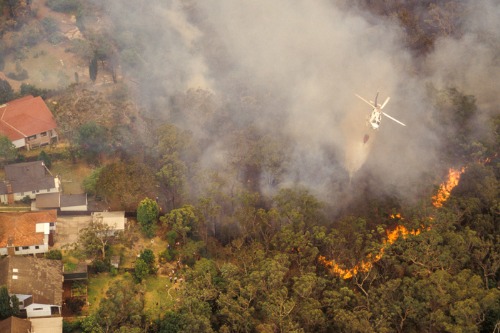

In terms of extreme weather events, 2020 proved to be a year of contrasts for Australia.
The year began with the ‘Black Summer’ bushfires, which raged across much of Australia’s eastern seaboard and resulted in immense financial costs for the insurance industry. The 2020/21 summer season, on the other hand, has so far been marked by the active La Niña weather pattern, which is associated with greater rainfalls and cooler daytime temperatures.
Despite this change, 2020 was the fourth hottest year on record for Australia, according to preliminary analysis released by the Bureau of Meteorology (BOM) last week. The increased risk of extreme weather events brought on by climate change has affected insurance rates in northern Australia in particular – according to the final report of the Australian Competition and Consumer Commission (ACCC)’s Northern Australia Insurance Inquiry, premiums for home, contents and strata insurance have, over the past decade, increased faster in the region than any other place in Australia.
Read more: Australia records fourth hottest year ever
“Given that official BOM weather records have only been around since 1910, it does not surprise me that 2020 was considered to be a hot one,” Karen Hardy, principal at ACME Insurance Brokers, told Insurance Business.
Since it is based in the Far North Queensland town of Tully, many of ACME’s clients have had to deal with weather-related premium increases. In Hardy’s view, these increases haven’t always been equitable.
“When the La Niña was announced back in September 2020, we witnessed a swift response from insurers with rate increases of 20% on average to allow for their increased exposure,” she said.
“Northern Australians already pay, on average, three times more for insurance than our southern counterparts, yet the number of ICA-declared natural disasters occurring in southern Australia as a result of hailstorms, east coast lows and the like far exceed the average return period of our cyclones.”
Hardy noted that, given that only approximately 6% of the Australian population lives in northern Australia, “it could be argued that these targeted rate increases within our region are disproportionate when considering the Australian market as a whole.”
“It could be further argued that a minimal rate increase across all of Australia would make more sense based on sheer volume,” she added. “Such an act would subsidise insurers’ exposure in northern Australia without causing further financial hardship or leaving northern communities exposed.”
Hardy’s proposal is similar to one that was recently floated by the Australia Institute’s chief economist Richard Denniss. Speaking with the Guardian, Denniss raised the question of “whether non-homeowners in southern cities should fund the lifestyle choices of homeowners in north Queensland” through a mass tax on individuals.
Given the potential for such a move to be politically unpopular, he also proposed a levy on companies that cause, and profit from, climate change.
“Such a levy could help not just homeowners but [also] local councils and other groups that will inevitably bear the costs that come with other people’s decisions to buy and sell coal,” Denniss said.
For Mark Ponton, senior underwriter – property at Epsilon Underwriting, the truth of the matter is that climate change poses a significant risk to the property insurance sector Australia-wide, and not just in its northern parts.
“We’ve got accounts across Australia and though there haven’t been many bushfires this summer, there has been a fair number of storms, floods and cyclones in areas as far apart as West Australia, Far North Queensland and even down in Sydney,” Ponton said.
Given the unavoidability of certain extreme weather events, Ponton emphasises the need for clients to be aware of methods through which they can minimise potential losses.
“When it comes to floods, for example, this can mean something as simple as storing goods off the ground to reduce the chance of them getting wet,” he explained.
